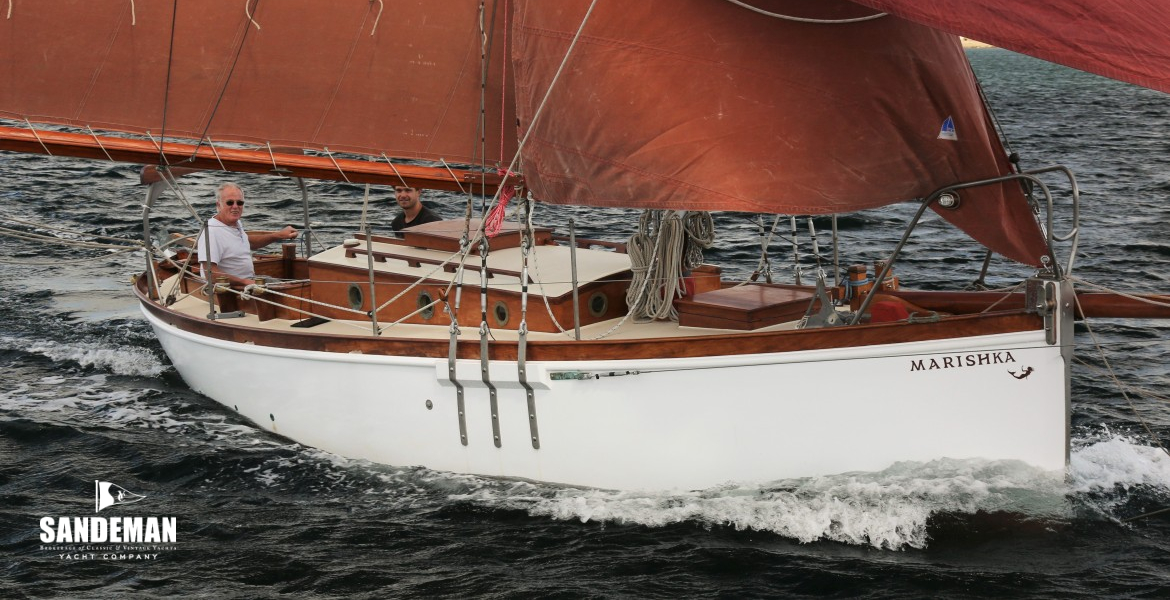
![Port bow [Nigel Sharp]](https://images.sandemanyachtcompany.co.uk/uploads/boats/142x100_691_15845055763f22e3cceb97.JPG)
![Port bow [Nigel Sharp]](https://images.sandemanyachtcompany.co.uk/uploads/boats/142x100_691_66396592963f22e39a0faf.JPG)
![Port quarter [Nigel Sharp]](https://images.sandemanyachtcompany.co.uk/uploads/boats/142x100_691_33221607763f22e3826a7d.JPG)
![Full and by [Nigel Sharp]](https://images.sandemanyachtcompany.co.uk/uploads/boats/142x100_691_148723459363f4be38553fb.JPG)
![Full and by [Nigel Sharp]](https://images.sandemanyachtcompany.co.uk/uploads/boats/142x100_691_71983339063f22e42cc181.JPG)
![Port quarter [Nigel Sharp]](https://images.sandemanyachtcompany.co.uk/uploads/boats/142x100_691_21411796463f22e44419ba.JPG)
![Topsail [Nigel Sharp]](https://images.sandemanyachtcompany.co.uk/uploads/boats/142x100_691_87772060063f22e40cfaa6.JPG)
![Reaching [Nigel Sharp]](https://images.sandemanyachtcompany.co.uk/uploads/boats/142x100_691_9780999763f22e35c20ff.JPG)
![View aft from mast [Nigel Sharp]](https://images.sandemanyachtcompany.co.uk/uploads/boats/142x100_691_89141275663f22eaa45cc2.JPG)
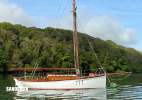
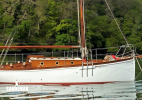
![Sternport details [Nigel Sharp]](https://images.sandemanyachtcompany.co.uk/uploads/boats/142x100_691_15933112563f22eac4ebb1.JPG)
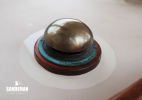
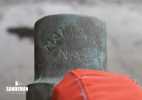
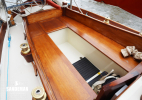
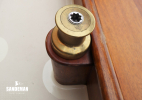
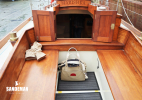
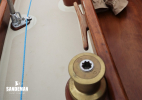
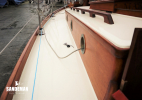
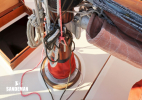
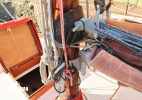
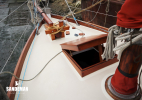
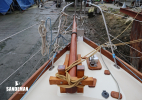
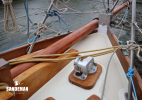

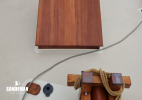
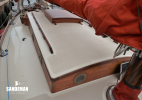
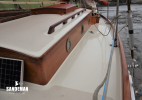
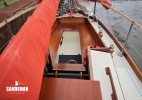
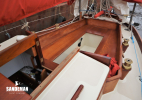
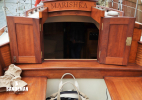
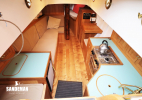
![Saloon view forward [Nigel Sharp]](https://images.sandemanyachtcompany.co.uk/uploads/boats/142x100_691_115321716263f22ed50d9f4.JPG)
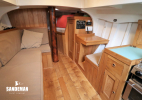
![Saloon view forward [Nigel Sharp]](https://images.sandemanyachtcompany.co.uk/uploads/boats/142x100_691_82106627663f22ed657d7f.JPG)
![Saloon view forward [Nigel Sharp]](https://images.sandemanyachtcompany.co.uk/uploads/boats/142x100_691_50509837163f22ed8f03cc.JPG)
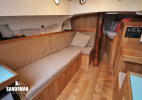
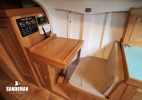
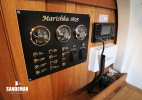
![Saloon view forward to fore cabin [Nigel Sharp]](https://images.sandemanyachtcompany.co.uk/uploads/boats/142x100_691_68456470663f22ed7a50a9.JPG)
![Fore cabin [Nigel Sharp]](https://images.sandemanyachtcompany.co.uk/uploads/boats/142x100_691_76195694563f22eda38568.JPG)
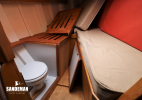
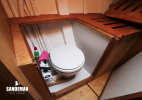
![Accommodation view aft [Nigel Sharp]](https://images.sandemanyachtcompany.co.uk/uploads/boats/142x100_691_119919742963f22ef838a60.JPG)
![Galley view aft to companionway [Nigel Sharp]](https://images.sandemanyachtcompany.co.uk/uploads/boats/142x100_691_60443638163f22ef9b544a.JPG)
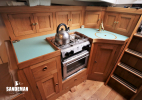
![Galley details [Nigel Sharp]](https://images.sandemanyachtcompany.co.uk/uploads/boats/142x100_691_20720261063f22f0dedc3d.JPG)
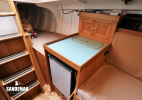
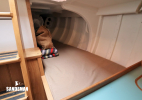
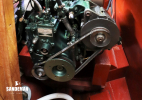
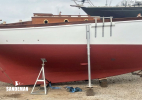

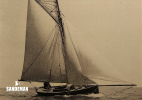
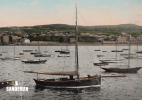
![Companionway [Nigel Sharp]](https://images.sandemanyachtcompany.co.uk/uploads/boats/142x100_691_107957592663f22ea883bff.JPG)
| Designer | Daniel Fyfe |
|---|---|
| Builder | Morris & Lorimer, Sandbank, Scotland |
| Date | 1895 |
| Length overall | 37 ft 6 in / 11.43 m |
| Length deck | 27 ft 9 in / 8.46 m |
| Length waterline | 25 ft 4 in / 7.72 m |
|---|---|
| Beam | 8 ft 3 in / 2.51 m |
| Draft | 5 ft 5 in / 1.65 m |
| Displacement | 5 Tonnes |
| Construction | Larch on oak |
| Engine | Yanmar 2GM20 2 cyl 16 hp diesel |
|---|---|
| Location | United Kingdom |
| Price | GBP 95,000 |
These details are provisional and may be amended
Few small yachts of this age enjoy such lavish care for their future. MARISHKA is lucky, but as her history reveals, she's a special one. The unmistakable and beautiful lines of the Loch Fyne Skiff evolved - heavily influenced by yacht design - from the early 1880s on the west coast of Scotland as a seaworthy, seakindly and practical solution for the insatiable demand for herring. Discerning cruisers warmed to their virtues and many were built as yachts. Apart from being fabulously rebuilt by her present experienced carpenter owner, MARISHKA has the added attraction of ancestry from a branch of the Fifes of Fairlie. Fully authentic externally, and practical and comfortable down below, MARISHKA presents an enticing fusion of old and new.
Interested in MARISHKA in more detail.
MARISHKA was two years into her second century when, on a dark and stormy Cornish night, disaster struck. A severe gale disturbed her Truro River tidal winter berth: she heeled out rather than in to the quay and fell over with the falling tide. The mud is soft around there and the damage was believed limited to a few cracked frames. Her owner - still her owner, an experienced carpenter - with the insurance company's blessing, decided to bring her to a boat shed near home to effect the repairs himself. Perhaps inevitably with a very old, always maintained but never restored yacht, the more he pulled her apart the more he found needing replaced. Twenty seven
years and much labour of love later, he finished. MARISHKA has enjoyed a "keel up" rebuild following almost exactly the fashion and scantlings of her original build, but, with the benefit of hindsight, not replicating elements that were bound to fail again. The floors and the hanging knees are all laminated oak this time, rather than copper fastened wrought iron. Few small yachts of this age enjoy such lavish care for their future. MARISHKA is lucky, but as her history reveals, she's a special one. All the 'new' oak is from reclaimed stock.
- Original lead ballast keel
- Original elm wood keel
- Original deadwoods
- New solid oak stern post
- New laminated oak stem
- New laminated oak frames
- New steam bent copper fastened oak timbers between the frames
- New laminated Scottish larch beamshelves
- New solid and laminated larch deck beams
- New composite deck: epoxy sheathed over 12 mm t&g larch/ 6mm and 9 mm plywood
- Trunk cabin sides - teak
- New cockpit coamings - iroko
- New interior and systems as described below
NATIONAL HISTORIC SHIPS REGISTER No. 1591
"The Lochfyne skiffs have been described as one of the prettiest of British fishing boats...."
Mike Smylie, Traditional Fishing Boats of Britain and Ireland, 1999.
THE DESIGNER : DANIEL FYFE (c1840 - 1901)
His father, John Fyfe, a wooden ship builder at Ardrossan, Ayrshire, was a cousin of the first William Fife yacht builder of Fairlie. Daniel was born at Ardrossan in c1840. In 1841 his mother died and he was raised by a relative there. His three older brothers left home to take up apprenticeships with William Fife at Fairlie, then established their own yard at 'The Red Shed', Rothesay, Isle of Bute. As Victorian gentrification of the increasingly fashionable resort advanced along the shoreline, they subsequently migrated to Ardmaleish near Port Bannatyne.
Daniel, however, seems to have carved out his own career as a semi-itinerant shipwright. Genealogical and boatbuilding records find him working at various locations in east, west and south west Scotland, including in the 1860s at Rothesay, presumably with his brothers, and in the early 1880s at Girvan, Ayrshire where he was employing two men and an apprentice at the 1881 Census. The Loch Fyne Skiff type is believed to have originated in Girvan, Ayrshire in 1882. Perhaps by Daniel Fyfe? He wasn't the only boatbuilder in Girvan, but he inherited his family's gift for turning out a fine model. More research is necessary.
By the early 1880s Daniel was building lugsail-rigged Loch Fyne type fishing skiffs at Paisley, and lugsail skiff small yachts mostly for clients with summer houses at Millport on Great Cumbrae island off Largs and Fairlie. Daniel eventually made Millport his base, continuing to design and build small lugsail yachts there into the 1890s. At some late 19th Century point he moved to Tarbert, Loch Fyne, where he died in 1901, his son Thomas continuing the business there that had become Daniel Fyfe and Son with a yard at 'The Battery'.
THE BUILDER : MORRIS & LORIMER, SANDBANK, HOLY LOCH, CLYDE
From the late 19th and for much of the 20th Century Morris & Lorimer became well established as the principal Clyde laying up yard for large yachts, and a significant contracting builder of yachts and commercial vessels of all types. Robert Lorimer, who had worked his way up from message boy to a manager at the huge Fairfield shipyard, Govan, Glasgow, and Millport, Isle of Cumbrae-born boatbuilder David Morris, who had also worked in Govan, joined forces in 1885 at Sandbank. Morris had earlier settled at Kirn, Dunoon, in the 1870s where he gained a reputation for building extreme racing yachts for the new generation of office rather than yard based designers, in particular, William Evans Paton. After Morris's sudden death in 1887, the Lorimer family continued the business with success well into the 20th Century. It is now the site of Holy Loch Marina.
MARISHKA
The little island of Great Cumbrae and its delightful port resort of Millport seem to feature large in MARISHKA's story. Morris & Lorimer co-founder, David Morris, was born there in 1829, the son of a ship master, and as above, Daniel Fyfe worked there 1880s - 1890s.
One particularly interesting Daniel Fyfe Millport build was the lug-rigged 32- footer ORIEL (1888), owned from c1890 by Thomas B Middleton of Dublin, the originator of the world's first one design racing class, the 'Water Wag'. The original Water Wag design was a Scottish round stern skiff type; Middleton was obviously a big fan - though ORIEL's first owner may have been George Henry Pentland of Black Hall, Drogheda. It is too much of a coincidence to discount ORIEL's unique presence in the Dublin Bay area, and founder member of Howth Yacht Club, solicitor and member of the brewing family, Noel Guinness's decision to commission MARISHKA from Fyfe.
The Loch Fyne type, heavily influenced by advances in yacht design through the 1870s and early 1880s, by the introduction of the 'ring net' fishing method, and with a reputation for supreme seaworthiness, had become fashionable as the basis of a voluminous for the time, wholesome and seaworthy cruising yacht type. One of the earliest Loch Fyne type cruising yachts was the GL Watson-designed NELL of 1887 (built by Thomas Orr Jr of Greenock) - a rather good endorsement.
Perhaps after a west coast of Scotland shakedown cruise, MARISHKA - presumably a term of endearment for Noel Guinness's wife of less than a year, Mary Stokes - arrived on Dublin bay in the late summer of 1895 and took part in some handicap races. But for racing Guinness soon graduated to more specialist yachts, becoming the first owner of the Howth 17 RITA and a John Atkinson of Bullock-built Water Wag. Atkinson had altered MARISHKA's accommodation during the winter 1895 - 1896, and she was presumably mostly a cruiser in Guinness's ownership. She was originally lugsail rigged as was traditional for Loch Fyne Skiffs, but later Guinness gave her the very efficient high aspect ratio gaff rig seen in the vintage photo here.
After Guinness parted with MARISHKA 1909/1910, there began a string of ownerships through the 20th Century as - via Helensburgh on Firth of Clyde, then the Forth and Clyde Canal - she very slowly almost circumnavigated Britain. She was owned at the (later Royal) Northumberland Yacht Club, Blyth for long enough through the 1920s and 30s to have 'NYC' engraved on her rudderhead, and she occasionally raced out of Bridlington, home of the Royal Yorkshire Yacht Club.
MARISHKA's later, south coast of England owners include from the late 1970s into the 1980s, Tom and Ros Cunliffe, who have subsequently become great media champions of traditional vessels.
Via a subsequent owning partnership, the present owner purchased MARISHKA in her centenary year and enjoyed two seasons of cruising and festival-going all points west from Falmouth, including Brest '96 and Bristol '96. These intense two seasons, including a full-on Celtic Sea storm passage, cemented a relationship with MARISHKA that fuelled the desire to do the right thing by her - detailed below.
©2025 Iain McAllister/ Sandeman Yacht Company Ltd.
GENERAL
- Painted epoxy sheathed finish
- Iroko raised toerail
- Brushed stainless steel stanchions
- All 'bright' finish is dtain/ preservative
AFT
- Bronze personalised rudder head
- Bronze open with mid bollard mooring fairleads to port and starboard
- Laminated tiller
- Brushed stainless steel mainsheet horse
- Tufnol mainsheet blocks
- Padeyes for running backstay purchases
COCKPIT
- Iroko raised, capped coamings
- Samson posts port and starboard aft for mainsheet/ mooring
- 4 x Wilmex bronze #10 sheet winches on plinths
- Associated iroko cleats
- Gas bottle under aft cockpit seat
- Cockpit locker under starboard cockpit seat
- Quarter sawn teak companionway hatch
TRUNK CABIN
- Teak trunk cabin sides
- 3 x Bronze opening ports port and starboard; 2 x forward
- Iroko handrails port and starboard
MAST POSITION
- Pinrails w. bronze pins port and starboard at shrouds
FOREDECK
- Teak and teak plywood forehatch
- Bowsprit offset to port
- Oak bowsprit bits/ Samson posts
- Stowage for CQR anchor to starboard
- Lofrans Dorado 12 V Horizontal windlass rope or chain drum
- Bronze mooring fairleads port and starboard
- Bow roller to starboard of stem
- Brushed stainless steel stemhead fitting
- Brushed stainless steel pulpit
5 x STEPS DOWN FROM COMPANIONWAY
- Reclaimed English oak carpentry
- Reclaimed English oak cabin sole
GALLEY TO STARBOARD
- Stainless steel inset sink
- Bronze manual hand pump
- Plastimo Neptune 2500 Gas 2-burner hob, grill, and oven
- Food, utensil and crockery lockers
FRIDGE & QUARTER BERTH TO PORT
- Vitrifrigo front opening refrigerator
- Fiddled sideboard over
- Lockers outboard
- Quarter berth aft
- Bulkhead light
SALOON
Settee berth to port
- Fuel tank and house battery under
Lockers outboard
- Fiddled shelf outboard
Chart table and bench to starboard
- Ship's isolator panel
- VHF Radio
- GPS plotter display
MOVING FORWARD
- Hanging locker to starboard
- Fiddled top surface
- Mast position to port
FORE CABIN
- V-berth
- Stowage under starboard berth
- Stowage and Jabsco manual sea toiletunder port berth
- Shelves outboard to port and starboard
- 2 x Bulkhead lights
- Forehatch in deckhead
RIG
Gaff cutter rig
- Solid fir single spreader mast
- Galvanised fittings
- Spiderband with 4 x pins
- Douglas fir boom
- Douglas fir bowsprit
- Silver spruce gaff
- Topsail yard
SAILS
- By SKM, Falmouth
- Mainsail
- Staysail
- Jib
- Topsail
CANVASWORK
- In red acrylic
- Mainsail boom cover
- Boom tent
- Comapionway hatch cover
- Forehatch cover
- Coachroof grabrails covers
- Tiller cover
- Windlass cover
MECHANICAL
- Yanmar 2GM20 2 cyl 16 hp diesel
- Traditional drive train
- 3-Fixed bronze propeller in aperture
ELECTRICAL
- 165 Ah House battery (under salon settee)
TANKAGE
- 80 L Fuel tank (to port under saloon settee)
- 180 L Water tank
NAVIGATION
- Standard horizon CP 180 GPS plotter
COMMUNICATIONS
- Standard Horizon Explorer VHF Radio
TBA
Sailing and some accommodation pics
- Nigel Sharp
Historical sailing pic and reference
- 'Howth - A Centenary of Sailing' by WN "Winkie" Nixon
- 'The Fyfes of Bute' @ Ewan Kennedy's 'Scottish Boating' blog
Contact us to discuss MARISHKA in more detail.
These particulars have been prepared from information provided by the vendors and are intended as a general guide. The purchaser should confirm details of concern to them by survey or engineers inspection. The purchaser should also ensure that the purchase contract properly reflects their concerns and specifies details on which they wish to rely.